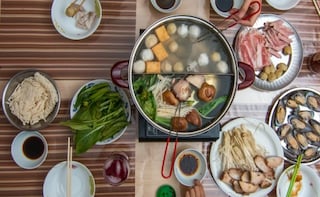It’s a cold yet clear day in December and I’ve just witnessed one of the most spectacular sights anywhere in the world. I’m at Lake Kawaguchiko, one of the vantage points to capture a picture postcard view of Japan’s iconic Mount Fuji. I’m still under the spell of ‘Fujisan’ as we arrive at a popular local restaurant – Kosaku Hoto Kosaku. Diners come from all over Japan to sample Hoto, a delicacy in this prefecture (Yamanashi). Local legends suggest that a regional warlord and his samurai always stopped for Hoto before heading into battle. I kicked off my shoes before entering the restaurant with traditional Japanese ‘low’ seating.
Advertisement
Advertisement
Advertisement
Advertisement
For the latest food news, health tips and recipes, like us on Facebook or follow us on Twitter and YouTube.
Advertisement
